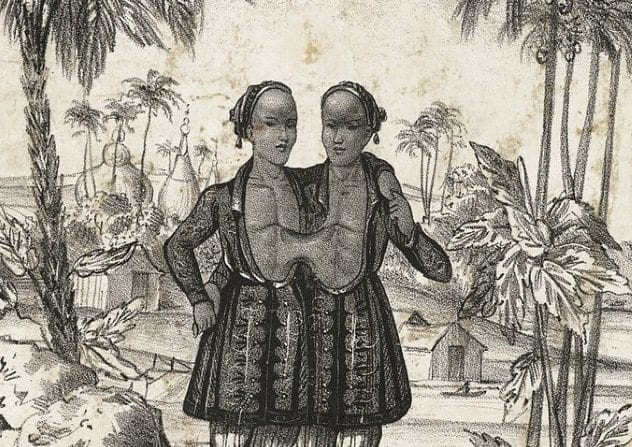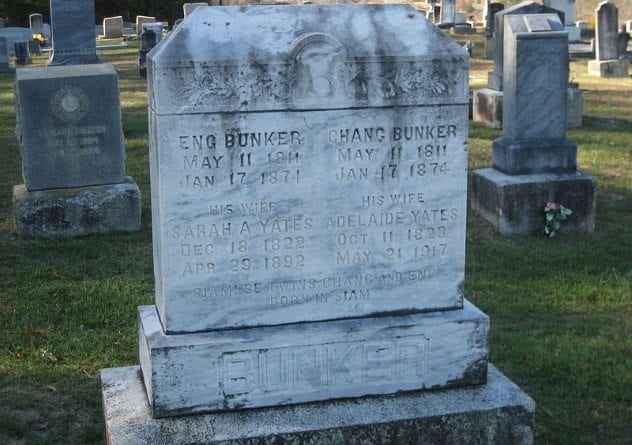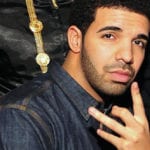 Miscellaneous
Miscellaneous  Miscellaneous
Miscellaneous  History
History 10 Huge Historical Events That Happened on Christmas Eve
 Music
Music 10 Surprising Origin Stories of Your Favorite Holiday Songs
 History
History 10 Less Than Jolly Events That Occurred on December 25
 Weird Stuff
Weird Stuff 10 Funny Ways That Researchers Overthink Christmas
 Politics
Politics 10 Political Scandals That Sent Crowds Into the Streets
 Weird Stuff
Weird Stuff Ten Bizarre Facts About The Doge Meme
 Our World
Our World 10 Ways Your Christmas Tree Is More Lit Than You Think
 Movies and TV
Movies and TV The 10 Coolest Stars to Set Sail on The Love Boat
 History
History 10 Things You Didn’t Know About the American National Anthem
 Miscellaneous
Miscellaneous Top 10 Things Crypto Was Supposed to Change & What Actually Did
 History
History 10 Huge Historical Events That Happened on Christmas Eve
 Music
Music 10 Surprising Origin Stories of Your Favorite Holiday Songs
Who's Behind Listverse?

Jamie Frater
Head Editor
Jamie founded Listverse due to an insatiable desire to share fascinating, obscure, and bizarre facts. He has been a guest speaker on numerous national radio and television stations and is a five time published author.
More About Us History
History 10 Less Than Jolly Events That Occurred on December 25
 Weird Stuff
Weird Stuff 10 Funny Ways That Researchers Overthink Christmas
 Politics
Politics 10 Political Scandals That Sent Crowds Into the Streets
 Weird Stuff
Weird Stuff Ten Bizarre Facts About The Doge Meme
 Our World
Our World 10 Ways Your Christmas Tree Is More Lit Than You Think
 Movies and TV
Movies and TV The 10 Coolest Stars to Set Sail on The Love Boat
 History
History 10 Things You Didn’t Know About the American National Anthem
Top 10 Amazing Facts About The Original Siamese Twins
Chang and Eng Bunker, the original “Siamese Twins,” lived a very interesting and storied life together. Those lives sadly ended in an ironic tragedy not even Shakespeare could come up with. The conjoined twins were much more than just an interesting “oddity,” since they had a stellar stage career together as world-class acrobats, were successful businessmen, and were once considered to be the “Eighth Wonder of the World.”
Soon after arriving in Boston in 1829, the strange yet endearing duo started performing for large crowds all over the United States and eventually Europe in carnivals, freak shows, and circuses. They performed with other human rarities, such as “Zip—The Man Monkey” and “The Amazing Wolf Children of Australia.” Even though many thought they were fake, Chang and Eng were permanently connected below their breastbones by an appendage consisting of ligaments and cartilage, about 13 centimeters (5 in) long and 5 centimeters (2 in) wide.
10 Myth: Chang And Eng Were Siamese

Contrary to popular belief, Chang and Eng were not Siamese, even though they were born in Thailand (then Siam). The twins were born on May 11, 1811, in a floating riverside house in a small fishing village about 70 kilometers (44 mi) southwest of Bangkok. From recent research, we know that the boys weren’t Siamese at all. Their 35-year-old mother was half Chinese and half Malayan, and their father was full-blooded Chinese, so Chang and Eng were more Chinese than anything.
At their birth, the two highly superstitious midwives who were present shrunk back in obvious fear and horror at the sight before them. There was a large tube of flesh connecting the two baby boys. The twins came out with the umbilical cord wrapped around them, but their mother untwisted it, probably saving their lives by doing so. After this, she positioned them so they could stare into each others’ eyes, Chang on the left and Eng on the right. Chang was always a bit shorter than Eng, and his back curved away slightly from his twin brother.
9 Chang And Eng Were The Original Siamese Twins

In Chang and Eng’s time, people were still very superstitious of many things, so conjoined twins were naturally thought of as “the work of the Devil.” One must keep in mind that medical understanding was still very much lacking around the globe back then. For that reason and more, the Bunker twins were at a disadvantage right from birth, and it got even worse when a cholera epidemic took five of their brothers and sisters as well as their father. This made the twins solely responsible for supporting the family, and the family-owned preserved duck egg business wouldn’t support them.
This inevitably led to 1829, when at age 17, the twins found themselves on a ship sailing for Boston. With help from a translator, they quickly picked up bits of English and were said to climb a ship mast as fast as any crewman aboard. Once in Boston, they were billed as the “Siamese Double Boys” and were instantly popular. It wasn’t long before the famous moniker “The Siamese Twins” was coined, and they became famous around the globe. “Siamese twins” was eventually used as a term for all conjoined twins.
8 They Succeeded Under Prejudice And Terrible Odds

Although once billed as the “Eighth Wonder of the World” for their amazing acrobatics and showmanship, Chang and Eng were badly persecuted in their own country. As conjoined twins of mixed decent, they were picked on and bullied throughout their childhood. Much more damaging, though, was when they were blamed for the previously mentioned cholera epidemic, which killed 30,000 people, causing dead bodies to jam up in the river. In fact, the lyrics to a song called “Living Curse,” written in Singapore, recite the twins’ ordeal of almost being lynched by an angry mob because of this mass superstition.
Twice in their career, the twins were managed by the famous P.T. Barnum, infamous for his mantra, “There’s a sucker born every minute.” Surprisingly, they apparently did great while with him. At the same time, Herman Melville called them “monsters” and likened them to characters in Moby Dick. They endured all of this in spite of their preforming privately for dignitaries such as Russian tsar Nicholas II and English matriarch Queen Victoria.
7 They Were Thought To Be A Strange Animal At First

Chang and Eng’s lives probably would have been mundane and uneventful had it not been for Robert Hunter, a British sea merchant who first saw them when they were still children. At first, Hunter thought they were some kind of weird animal swimming across a river. But when he realized he was looking at twin boys, he quickly realized their potential for profit and talked their parents into letting him take them west to the United States to put them on display. Even with Hunter’s quick thinking, though, it still took five years, $500 for the boys’ mother, and an American sailor to get them legally out of Siam. A ship captain named Abel Coffin helped Hunter to persuade the king of Siam, Rama III, to let the twins go to the US by allegedly bribing him with a troupe of dancers and a telescope.
As children, with much encouragement from their mother, Chang and Eng exercised religiously, working to choreograph their movements. In doing so, the pair soon stretched the ligament binding them to a length of 13 centimeters (5 in). This allowed them to swim, walk, run, do gymnastics, and even handle a boat with true skill. As custom of the era dictated, they were also able to bow in unison the 18 times required when introduced to king Rama III. The twins were very adept at walking on their hands, which turned into their signature act and a crowd favorite just about everywhere they went. By way of their precision acrobatic performances, Chang and Eng were wealthy before they turned 30.
6 Myth: Chang And Eng Fought In The US Civil War

In 1869, Packard’s Monthly printed a comic sketch by Mark Twain entitled “Personal Habits of the Siamese Twins,” which made some wild claims about the world-famous pair. Insinuating that he knew Chang and Eng personally, Twain claimed that the Bunker brothers had been fanatical enemies during the Civil War. He went as far as saying that they performed “gallantly” in battle, Chang for the rebels, Eng for the yanks, and that they had once taken each other prisoner at the Battle of Seven Oaks. Twain went on to claim that it took an army court to decide who caught who. Now, try to imagine their uniform. Or how about the pair standing there with muskets, trying to decide who was going to shoot who first—or if should they carry one gun or two?
Chang and Eng probably wouldn’t have lasted long on a Civil War battlefield, and Mark Twain likely knew that. He was well-known for his sense of humor, so this was obviously not an historical account. But what is true is that Eng was called up on a local rebel draft at the beginning of the war, but since Chang refused to join, the Confederate officer in charge had no choice but let them go, since he obviously couldn’t haul off just one. Another lesser-known fact is that two of the twins’ sons did fight for the Confederate Army.
5 Myth: Chang And Eng Were Slaves

Some have apparently believed that the Bunker twins were once slaves to their American business agents, but that turned out to be totally false. In fact, the Bunker twins never needed P.T. Barnum; he needed them. Research shows that they were always paid well for performing and managed to get quite rich doing it.
Their biggest career mistake was unknowingly buying land in Wilkesboro, North Carolina, which would lead them straight into the jaws of the Confederacy. In 1852, newspapers caught wind of the fact that Chang and Eng owned slaves and concocted a fabricated story making them out to be monsters. Several big East Coast newspapers printed flaming articles, describing how the twins abused their slaves and were “brutal slave masters” to them. The twins responded by printing a booklet containing a flaming statement of their own in dispute. Also included was an affidavit attesting to their outstanding qualities, signed by 13 members of their local community, who were also enraged by the lies.
While Chang and Eng did indeed own 33 slaves, they treated them comparatively well. Notably, they taught them to read and write, which was illegal and punishable by death in some Southern states by the end of the Civil War.
4 Myth: A ‘Love Triangle’

A joke once made the rounds that Chang and Eng were caught in a “love triangle” and that they wanted to do battle over the situation. It was said that they challenged each other to a duel but couldn’t decide on the distance they would fire at each other from. The truth is somewhat less ridiculous.
Chang and Eng were attracted to the daughters of David Yates, a fellow farmer living on a neighboring plantation. A romantic dilemma was afoot concerning the Yates sisters, Sarah and Adelaide. Adelaide and Chang had fallen in love, but it took five years for Eng and Sarah to do the same. In Victorian era, the twins marrying two sisters was totally acceptable and made perfect sense, so in 1843, the foursome were married in a Baptist ceremony in the Yates’ living room.
News got out that back on the Bunker plantation, that the two couples had ordered a reinforced bed to be built to hold all four of them. So naturally, their wedding produced a national scandal, with people claiming the union was ‘bestial’ and reflected the warped morals of the Confederacy. It was reported that after a woman in Kentucky had conjoined twins, she blamed it on viewing photographs of Chang and Eng around the time she got pregnant. Regardless of the opposition to their marital state, the Bunker twins went on to sire 21 children between them, and they have over 1,500 descendants today.
3 Myth: Chang’s Drinking Got Eng Drunk

Forced to sleep literally face-to-face, the twins obviously had to get along, but that doesn’t mean they always did. They had two distinct personalities, and just like normal twins, there were opposite poles to them. Being forced to cooperate on everything in life, the twins bought a second house and alternated between the two distinct households, which matched their two distinct personalities. The two families would alternate on a three-day schedule, and depending on whose house they were in, that family was in full charge of everything, including where the other half was and what they were doing with their time.
A myth about the twins that occasionally shows up is that Chang’s drinking would get Eng drunk, causing the two to constantly get into drunken brawls and beat each other up. The truth is that Chang’s drinking did not affect Eng at all as far as the alcohol goes; Eng just didn’t like his brother when he drank, so they did argue a lot. There is an account of Chang threatening his brother with a knife once, but cooler heads prevailed, and nobody was hurt. But other than that, there seems to no evidence of either twin ever hurting the other physically, whether Chang was drinking or not.
2 Their Last Tour In 1866 Was Their Worst

Once they were in the US, the money rolled in quickly for Chang and Eng, but life was still costly nonetheless. In 1838, after a grueling and physically challenging seven-year tour across the country, they decided to take their first hiatus from show business. Rich enough to retire and exhausted from the tour, Chang and Eng had already become legal citizens of the United States, so they naturally resided in their new country. They took the surname “Bunker” from a good friend of theirs from Boston, bought a plantation in North Carolina, and melded into the agrarian life of the antebellum South.
After building a life for themselves and gaining an unusually high status in the slave-holding South, they lost everything during the Union invasion of North Carolina in the Civil War. After their farm was destroyed, the twins needed to go on tour again in 1866 just to earn a living. By that time, though, they were in their fifties, and their stardom had diminished. On top of that, Chang was a bitter alcoholic, so their wittiness had also diminished as well, and their act reflected it. The tour of 1866 was a financial disaster.
1 Myth: Eng Watched Chang Die

On a frigid January night in 1874, Eng woke up to discover that his brother Chang had died sometime during the night, so the claim that he watched his brother die is not true. Eng and Chang were 62, and Eng’s last act in his final three hours was to make amends with his brother, now lying cold and dead beside him. Chang had suffered a stroke not long before, and complications from his alcoholism had also weakened him. Recent research suggests that the autopsy concluded that they shared one liver, so it is doubtful that the Siamese Twins would have survived the surgery to separate them later in life. Ironically, it is said that they may have been separated easily at birth, had there been a surgeon there to perform the surgery.
Although Eng passed away soon after his brother, in what was certainly a heartbreaking manner, their story did not end there and lives on to this very day. After the funeral and burial, the twins’ bodies were eventually dug up and sent to the College of Physicians in Philadelphia, where they were dissected and studied. Afterward, a death cast of their remains was made, which resides in the Mutter Museum in Philadelphia to this day—an eerie reminder of the original Siamese Twins and their shared legacy.
I live in Northwestern Pennsylvania in the United States of America, and in “one of the Original 13” I like to say, where I grew up with a fascination for collectibles like baseball cards, coins, stamps, and old bottles just to name a few. Always a self-starter, I’ve taught myself many different things and have ended up with a large variety of skills and hobbies in both old and new and have recently started putting them to use in the Internet. I have been writing in several capacities for several decades.








